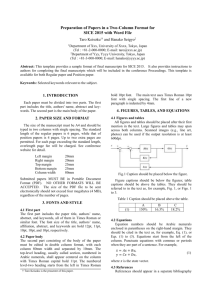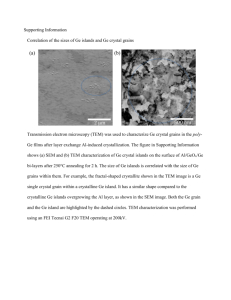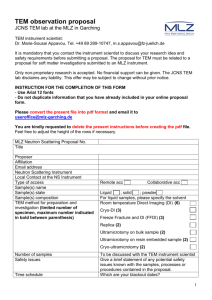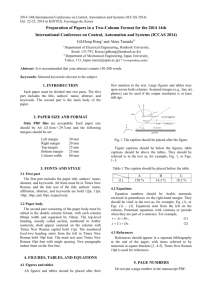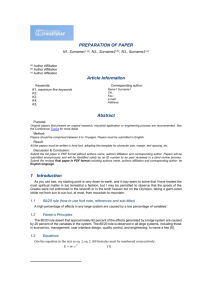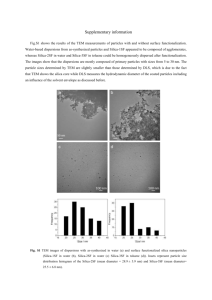Instructions for the authors
advertisement
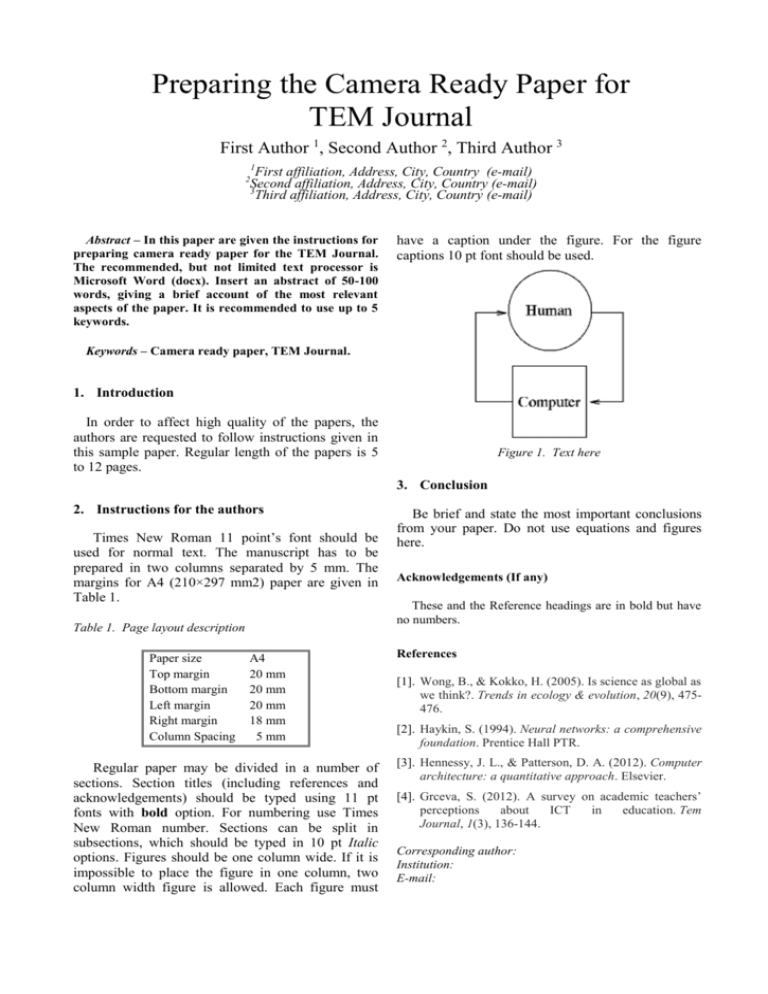
Preparing the Camera Ready Paper for TEM Journal First Author 1, Second Author 2, Third Author 3 1 First affiliation, Address, City, Country (e-mail) Second affiliation, Address, City, Country (e-mail) 3 Third affiliation, Address, City, Country (e-mail) 2 Abstract – In this paper are given the instructions for preparing camera ready paper for the TEM Journal. The recommended, but not limited text processor is Microsoft Word (docx). Insert an abstract of 50-100 words, giving a brief account of the most relevant aspects of the paper. It is recommended to use up to 5 keywords. have a caption under the figure. For the figure captions 10 pt font should be used. Keywords – Camera ready paper, TEM Journal. 1. Introduction In order to affect high quality of the papers, the authors are requested to follow instructions given in this sample paper. Regular length of the papers is 5 to 12 pages. Figure 1. Text here 3. Conclusion 2. Instructions for the authors Times New Roman 11 point’s font should be used for normal text. The manuscript has to be prepared in two columns separated by 5 mm. The margins for A4 (210×297 mm2) paper are given in Table 1. Table 1. Page layout description Paper size Top margin Bottom margin Left margin Right margin Column Spacing A4 20 mm 20 mm 20 mm 18 mm 5 mm Regular paper may be divided in a number of sections. Section titles (including references and acknowledgements) should be typed using 11 pt fonts with bold option. For numbering use Times New Roman number. Sections can be split in subsections, which should be typed in 10 pt Italic options. Figures should be one column wide. If it is impossible to place the figure in one column, two column width figure is allowed. Each figure must Be brief and state the most important conclusions from your paper. Do not use equations and figures here. Acknowledgements (If any) These and the Reference headings are in bold but have no numbers. References [1]. Wong, B., & Kokko, H. (2005). Is science as global as we think?. Trends in ecology & evolution, 20(9), 475476. [2]. Haykin, S. (1994). Neural networks: a comprehensive foundation. Prentice Hall PTR. [3]. Hennessy, J. L., & Patterson, D. A. (2012). Computer architecture: a quantitative approach. Elsevier. [4]. Grceva, S. (2012). A survey on academic teachers’ perceptions about ICT in education. Tem Journal, 1(3), 136-144. Corresponding author: Institution: E-mail:
